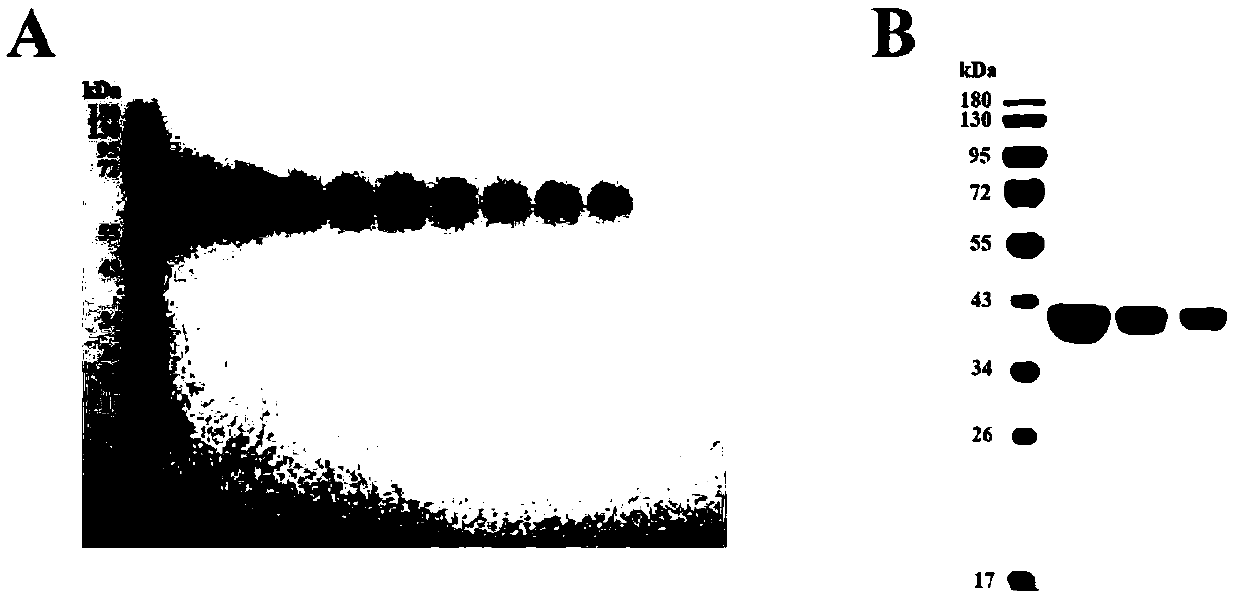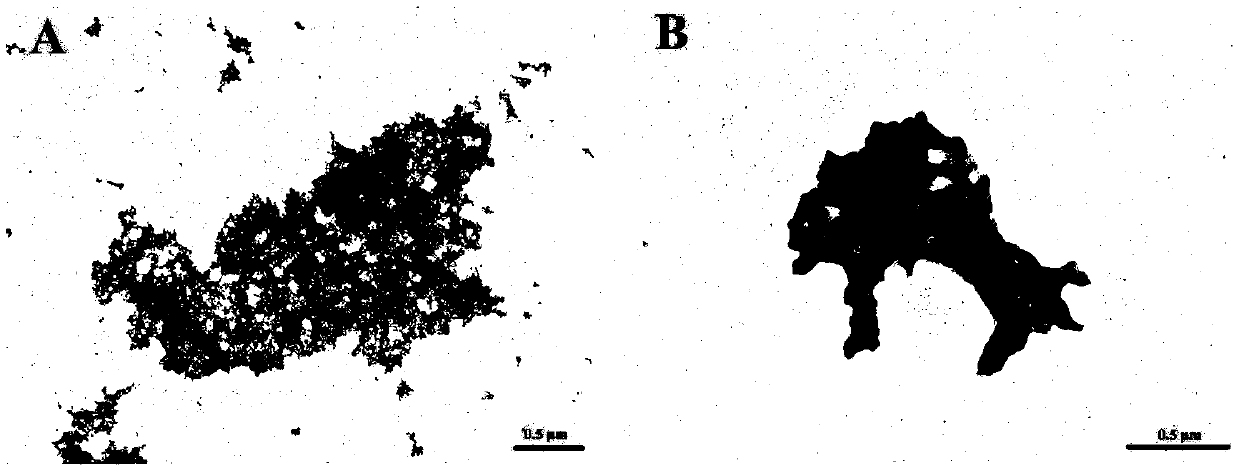Threonine dehydratase and application thereof
A threonine dehydratase and amino acid technology, applied in the biological field, can solve the problems of weak nanoparticle size control, large environmental damage, complicated operation, etc., achieve high fluorescence intensity and fluorescence stability, environmental friendliness, and simple and easy raw materials The effect
- Summary
- Abstract
- Description
- Claims
- Application Information
AI Technical Summary
Problems solved by technology
Method used
Image
Examples
Embodiment 1
[0040] The separation and purification of embodiment 1 threonine dehydratase
[0041] The genome of Pseudomonas stutzeri 273 was known from Genbank, and the accession number of Genbank was CP015641, so as to obtain the complete sequence as a template, PCR amplification was carried out according to the following primers to obtain the threonine dehydration shown in SEQ ID NO.1 The gene encoding the enzyme, the amplified gene was connected to the expression plasmid pET28a by HindIII / BamHI double enzyme digestion and ligation method, and then the threonine dehydratase expression plasmid (pET28a-TD) was obtained, and then the ligation product was transformed into the large intestine Overexpression in E.coli BL21;
[0042] Amplification primers are F: CGCGGATCCGCGATGTTCGATCTACACCAACT; R: CCCAAGCTTGGGTCAGGCGGTCTGGCCAGCCG;
[0043] The PCR system is: 1 microliter of template, 1 microliter of primer F1, 1 microliter of primer R1, 17 microliters of water, and 20 microliters of high-fid...
Embodiment 2
[0067] Embodiment 2 Threonine dehydratase catalyzes generation of hydrogen sulfide (H 2 S) enzyme activity detection
[0068] The separated and purified threonine dehydratase was subjected to SDS-PAGE electrophoresis, and a single band was observed after Coomassie brilliant blue staining ( figure 1 B), by figure 1 B shows that the obtained threonine dehydratase is single and the concentration is relatively high.
[0069] The isolated and purified threonine dehydratase was subjected to Native-PAGE electrophoresis, and brown bands were observed after bismuth chloride staining ( figure 1 A), threonine dehydratase catalyzes the production of H 2 S with bismuth chloride produces bismuth sulfide precipitates that are observed as brown bands.
[0070] Among them, the bismuth chloride staining buffer is triethanolamine hydrochloride 100mmol / L, pyridoxal phosphate 10μmol / L, bismuth chloride 1.0mmol / L, EDTA10mmol / L, L-cysteine 20mmol / L, pH 7.6.
Embodiment 3
[0071] Example 3 Utilize threonine dehydratase to prepare cadmium sulfide nanoparticles with cysteine as a coating material. 0.5mmol / L CdCl 2 and 20mmol / L cysteine were added to Tris buffer (Tris 50mmol / L, NaCl 150mmol / L, pH 7.5) containing 0.1mg / ml threonine dehydratase. The cadmium sulfide nanoparticle solution can be prepared by placing the enzymatic solution at 37° C. for 20-220 minutes.
[0072] It can be seen from the above system that the content of cysteine both as a substrate and as a coating should be much higher than that of cadmium. The higher the amount of cysteine, the better the stability of the cadmium sulfide nanoparticle system.
[0073] The prepared cadmium sulfide nanoparticle solution is carried out to the detection of absorption spectrum and fluorescence spectrum, the result shows that it has specific absorption peak and fluorescence peak, and it has significant fluorescence generation characteristics under ultraviolet light irradiation ( figure 2...
PUM
 Login to View More
Login to View More Abstract
Description
Claims
Application Information
 Login to View More
Login to View More - R&D Engineer
- R&D Manager
- IP Professional
- Industry Leading Data Capabilities
- Powerful AI technology
- Patent DNA Extraction
Browse by: Latest US Patents, China's latest patents, Technical Efficacy Thesaurus, Application Domain, Technology Topic, Popular Technical Reports.
© 2024 PatSnap. All rights reserved.Legal|Privacy policy|Modern Slavery Act Transparency Statement|Sitemap|About US| Contact US: help@patsnap.com










